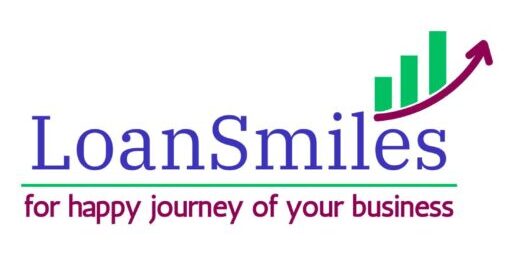Starting or expanding a business often requires significant capital, and for many entrepreneurs, securing funding can be a daunting challenge. However, with the availability of business loans with subsidies, businesses can now access financial assistance with added benefits, making it a smart and cost-effective way to fuel growth. In this blog, we’ll explore what a business loan with a subsidy is, how it works, and why it’s an excellent option for business owners.
What is a Business Loan with Subsidy?
A business loan with a subsidy is a financial assistance program where the government or financial institutions provide loans to businesses, often at reduced interest rates or with other benefits, such as a partial repayment waiver. Subsidized loans are designed to encourage entrepreneurship, promote specific industries, and support small and medium enterprises (SMEs) by reducing their financial burden.
These loans are typically offered under various government schemes, aiming to foster economic growth, innovation, and job creation in targeted sectors.
Key Benefits of a Business Loan with Subsidy
- Lower Interest Rates One of the most significant advantages of a business loan with a subsidy is the reduced interest rate. Subsidized loans usually come with lower interest rates compared to regular business loans, helping businesses save on interest payments over time.
- Financial Support for New Ventures Startups and new businesses often face difficulty in securing loans due to lack of credit history or collateral. With subsidy programs, governments aim to support new entrepreneurs by offering favorable loan terms, making it easier for them to get their business off the ground.
- Encouragement for Specific Sectors Many subsidy programs are aimed at promoting growth in specific sectors such as agriculture, manufacturing, renewable energy, and exports. Businesses in these sectors can access special loan schemes that offer subsidies on interest rates or capital investment.
- Partial Loan Waiver In some cases, a portion of the loan is forgiven as part of the subsidy program. This can significantly reduce the repayment burden for the business owner, making the loan more affordable in the long run.
- Government Backing A loan with a subsidy is often backed by government guarantees, which means there is less risk for lenders. This makes it easier for businesses to secure loans even if they do not have significant collateral or a strong credit history.
How to Apply for a Business Loan with Subsidy
If you’re interested in applying for a business loan with a subsidy, here’s how you can get started:
- Identify Relevant Schemes Governments and financial institutions offer various subsidized loan schemes, so it’s essential to research which programs are available in your region. For instance, India has several schemes like the Prime Minister’s Employment Generation Programme (PMEGP), Credit Linked Capital Subsidy Scheme (CLCSS), and Mudra Yojana, which offer subsidized loans for businesses.
- Check Eligibility Each subsidy scheme has specific eligibility criteria, which may include the type of business, size of the company, sector, and geographical location. Make sure your business qualifies for the subsidy before applying.
- Prepare Necessary Documents To apply for a business loan with a subsidy, you will need documents like your business plan, financial statements, proof of business registration, and personal identification. Some schemes may also require sector-specific documents.
- Apply Through a Bank or Government Portal Most subsidized loan programs are administered through banks or government-run portals. You can apply directly to a participating bank, or in some cases, through an online government platform. Be sure to follow the guidelines and provide all required documentation.
- Await Approval Once you’ve applied, the bank or lending institution will review your application, verify the documents, and determine whether you qualify for the subsidy. Once approved, you can receive the loan with the subsidized benefits.
Popular Business Loan Subsidy Schemes (Examples)
- Mudra Yojana (India): A scheme that provides loans to small businesses with no collateral required, specifically aimed at promoting entrepreneurship in rural and semi-urban areas.
- Credit Linked Capital Subsidy Scheme (CLCSS): A program in India that helps small-scale industries upgrade their technology by offering a subsidy on capital investments.
- Agricultural Loans with Subsidy: In many countries, governments offer subsidized loans to farmers and agribusinesses to encourage agricultural production and modernize farming techniques.
- Renewable Energy Subsidy Schemes: Businesses working in the renewable energy sector, such as solar or wind energy, can often access subsidized loans aimed at promoting sustainable energy practices.
When Should You Consider a Business Loan with a Subsidy?
A business loan with a subsidy is ideal for:
- Startups and SMEs: Small businesses that need affordable funding options to start or expand their operations can benefit significantly from subsidies, as they often have lower repayment burdens.
- Businesses in Priority Sectors: If your business is in a government-promoted sector such as manufacturing, agriculture, or renewable energy, a subsidized loan can provide you with the necessary capital at a reduced cost.
- Those Seeking Technology Upgrades: If you’re looking to modernize your operations with new technology or machinery, subsidy schemes that offer assistance for capital investments can reduce your overall costs.
Conclusion
Securing a business loan with subsidy can be a game changer for entrepreneurs looking for affordable financing solutions. Not only does it lower the cost of borrowing, but it also provides crucial support to businesses in targeted sectors, helping them grow and thrive. If you’re eligible for a subsidized loan program, take advantage of these benefits to fuel your business’s success.

